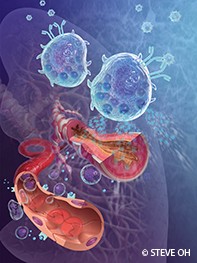Peer Reviewed
Feature Article Emergency medicine
Anaphylaxis: investigating and managing an allergic emergency
Abstract
Patient education on strategies to reduce the risk of unintentional exposure to triggers and development of an emergency action plan are key components in the long-term management and prevention of anaphylaxis.
Key Points
- The major causes of anaphylaxis are allergy to food, insect stings and medication, most commonly NSAIDs and antibiotics.
- The major risk factors for fatal anaphylaxis are the failure to recognise early symptoms, poorly controlled asthma, delayed or absent adrenaline use and the assumption of an upright posture.
- The cornerstones of acute management are the patient being in the supine position, intramuscular adrenaline, intravenous saline, airway support and oxygen, and observation for at least four hours after symptom resolution.
- Antihistamines have no role in the treatment or prevention of respiratory and cardiovascular symptoms of anaphylaxis.
- The mainstays of long-term management are patient education on the recognition of early symptoms and the need to seek early medical attention if required; to carry and be trained in the use of self-injectable adrenaline; and provision of an emergency action plan.
Purchase the PDF version of this article
Already a subscriber? Login here.

